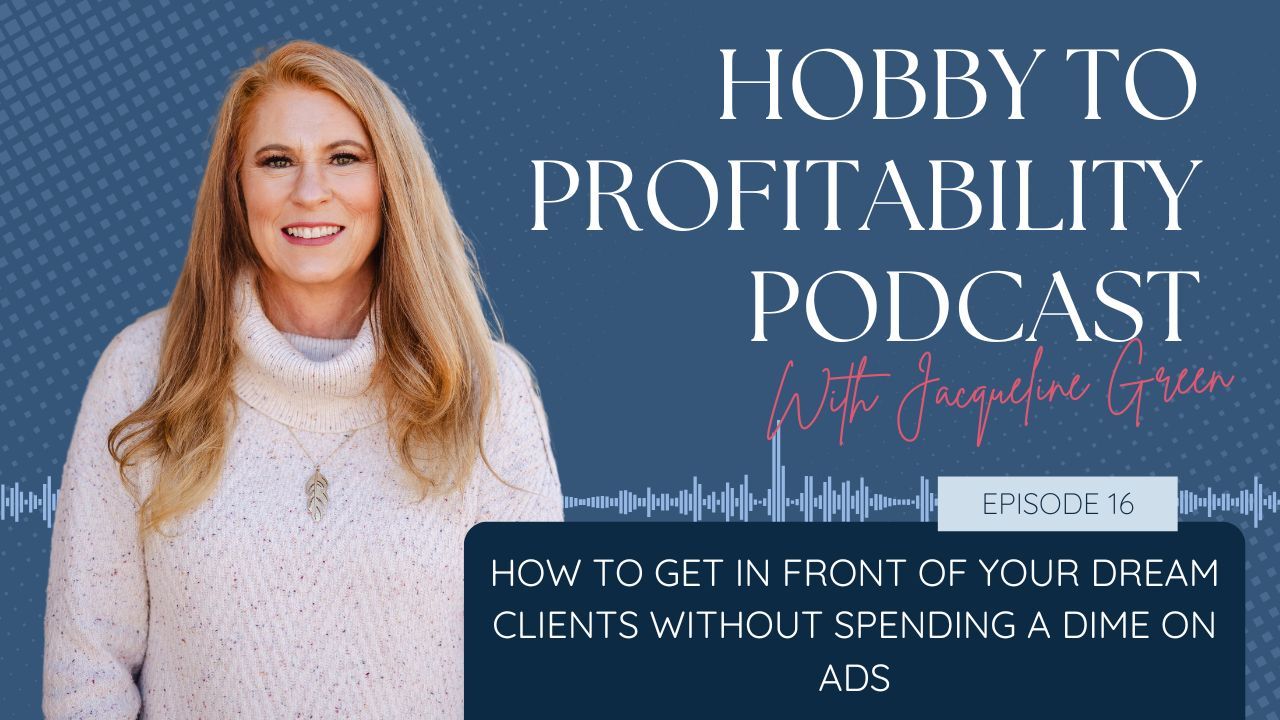How (& Why) Emerging Design Professionals Can Create a Personal Brand
Aug 13, 2021
Tips on Developing a Personal Brand that Sells!
As graduations are upon us, emerging design professionals need to understand how a personal brand can help build an interior design career. When I ask design students about branding, I see eyes glaze over. It is a topic I covered with my commercial design students, as well as throughout this blog. Personal branding is an essential aspect of building a design career.
What is Personal Branding?
Personal branding is your reputation. It is how others perceive you when they talk or work with you. It sounds like people are judging you, which we were all taught not to do. That isn’t the case. When you interact with someone, either in person, on the phone, or online, you leave a perception of yourself. You may not know you are consciously doing it.
If you find that your peers ask you questions about a topic, you may be known as someone helpful and willing to share knowledge. If no one speaks to you, then they may view you as a snob. It doesn’t mean that you are a snob, just that you are perceived that way. None of this means that you will always be perceived as a snob. Luckily, we can shape much of how people see us.
You Today, You Tomorrow
As an emerging professional, you are now in an entirely new realm. Even if you graduated last year or the year before, you might have noticed the “real-world” is quite different than school. I remember being incredibly excited to graduate, yet I was completely disappointed when I got my first job. It felt like I had just walked into the twilight zone. It was nothing like I thought it would be. Over time, my attitude changed. In my new work, I found myself in the many new challenges I was facing in the ever-changing world around me. Although it wasn’t what I thought, it ended up being fantastic.
Recognizing who you are today and who you want to be from a professional standpoint is the first step to determine what your personal brand is going to be moving forward. If you were often late to class and perpetually dressed like you literally got out of bed five minutes prior, it is time to change those bad habits. There is no better time than to freshen up your habits, clean up your social media, and find ways to excel in your new career.
Consider your dream of being an interior designer. What did you look and act like in that dream? I bet you weren’t late, nor wearing yesterday’s clothes. I bet in your dream you were taking names and kickin’ butt. You were the rock star of the design world. Now is the time to start shaping that future.
How we Shape our Personal Brand
There are many ways to shape your personal brand. My first advice to every student is to delete anything on your social media account that doesn’t represent you well. I promise that bikini-clad, drunk dancing fool at Dayton beach in 2019 is not helping your professional image. Lately, we have seen where past posts have directly impacted people’s careers 5, 10, 20 years later. Don’t let a silly post shred your future self.
My second recommendation is to start building your new professional reputation immediately, even if you haven’t graduated or currently working an interior design job. This includes creating a professional LinkedIn profile, expanding your network, and building a portfolio that sells.
Building your professional reputation begins with developing your personal brand statements. I recommend every person has three brand statements – short, medium-length, and long. A personal brand statement encompasses who you are as a professional employee. If I was hiring you, what can I expect from you? If I do business with you, what can I expect? These are valid questions that go through each person’s mind.
We start developing the personal brand by identifying where we are today and where we want to go tomorrow. I recommend making three lists:
- Strengths and accomplishments
- Perception from others – how do people perceive you professionally?
- What you love about your career, self, and characteristics
List 1: Strengths and Accomplishments
Do not stress if you haven’t achieved much in design. That is perfectly okay, as you are just getting started. However, I promise you have many strengths and gathered many accomplishments, whether you know it or not.
If you played a sport while getting a bachelor's, that is incredibly hard to accomplish. It is like having two full-time jobs. In doing so, you learned organization, teamwork, time management, and collaboration. If you worked while in school, even if it was not related to the design, it is gained work experience. Volunteering or working on committees is another excellent resource for skills. Do not limit yourself to just design skills.
List 2: Others’ Perceptions of You
Once you have a thorough strengths list, make another list of how you think people perceive you. Be honest with yourself, as you want to find those areas that you can improve and areas that need to be celebrated. If you aren’t sure what should be on this list, ask a few friends and peers.
Be sure not to get mad at them if you don’t hear what you want. Also, don’t get too hung up on what others think. Many people think I am too direct, as I often share what is on my mind without much sugar coating.
The truth is that I am good with that perception. I am me, and speaking honestly is one of the many things that make me unique and a good friend. With that said, I have gotten a bit better with gauging my audience and knowing when it is good to just keep my mouth shut. It comes with age and wisdom. Understand that you don’t necessarily have to agree with the perception, but you need to consider it.
List 3: Love What You Do
The third list is to take a deep dive into what you love and hope to accomplish in your future career. If you love meeting and talking with new people, you may be perfect for a sales role. If that sounds scary, but you love creating 3D models, then that might be more of your area of expertise.
This list may include items like mentoring others or organizing projects. Just because you are good at something doesn’t mean you love it. Only write down the items that truly drive you to get out of bed.
Designing a Personal Brand Statement
Now it is time to take those lists and craft a personal brand statement. As I mentioned, you need three brand statements – short, medium-length, and long. Your short statement is one sentence and often comes into play when you meet someone new and ask about you. It is short and concise.
Related Article: "8 Steps to Writing a Personal Brand Statement that Sells You"
This can read something like, “I am a recent interior design grad and excited to find my first design job.” The short statement needs to be spoken to encourage a secondary question. It should be concise and direct, but it also needs to peek someone’s attention.
The next question you might receive is, “oh, what kind of design job are you looking for?” This is where you can go into more details about who you are, your accomplishments, and what you are seeking from a job. It should be 3 to 5 sentences long. You may not realize it, but the design community is quaint in the sense that people know each other. You might think the person you are speaking with has no pull, but you don’t know their friends.
The long-length brand statement will be used in your portfolio, your LinkedIn page, and your website (if you have one). At this point, someone will read it because they are interested in knowing you better.
A word of advice is to be sure your statements are written clearly, concisely, and grammatically correct. I recommend Grammarly as a go-to grammar check software. You can check it out for free, but I can tell you from experience the pro version is well worth the cost.
Promoting your Personal Brand
I think LinkedIn is an excellent resource for professional contacts. With that said, you can use these tips on Instagram, Facebook, YouTube, or many other platforms.
Start with adding a professional-looking photo to your LinkedIn profile. It doesn’t need to be professionally taken. Have your mom or a roommate take a picture of you looking the professional part. By all means, don’t give your sexy look. It is weird when I see that on LinkedIn. Save it for the bars. Instead, your photo should represent you as a future employee or interior designer that I want to hire.
Once you have your photo, you want to add a personal brand statement to the about section. Here is the perfect opportunity to share your lengthy brand statement.
At this point, you should have a portfolio created. Go back through the portfolio and make sure it includes your branding statement and represents you according to the personal brand you want to achieve. Add the portfolio to your LinkedIn Profile.
Check out “How to Build an Interior Design Portfolio that Sells”
Now it is time to start sharing your knowledge and professional thoughts through posting relevant and consistent content. This takes some research and time, but you can create mood boards, product boards, 3D models, or anything related to the design industry that also supports your brand. If you attend an event, either online or in-person, share what you learn via long articles on LinkedIn followed by short-linked posts. Use social platforms to share images that represent your design style. Try different ideas and see what works. Ideally, you want to engage others in your industry and community.
Continue with making positive comments on other designer’s posts. Remember the dreaded online discussions you had to write during college. Don’t worry, we all hated them. Funny though, this is precisely where that skill comes in handy. And, you thought your instructors were just trying to torment you.
Building an online reputation takes time and consistency. Even if you have landed your first job, you need to continue this practice of participating in different online groups. Make connections, share helpful content, and give positive feedback to others. This is a great way to continue building your personal brand.
Living your Personal Brand
Every day as you go to work, live your brand. If your brand included helping others, you should ask the designers around you if they need your help. Take an interest in people’s lives and get to know them as individuals as well as designers.
The best way to expand your knowledge is to learn from those around you. Living your personal brand will help promote it without actually promoting it, per se. By living each day with your brand in mind, you will become that brand.
Check out our newly launched course "Build Your Brand Identity Beyond Logos: How Interior Designers Can Use Branding to Build a Successful Design Business". This is a 1.5 IDCEC credited course and is $49!
Sign Up for Our Monthly Newsletter
Get helpful career, business, and design tips right in your inbox each month.
At Behind the Design, we are committed to building a stronger design community by reimagining education, training, and support for interior designers. Through our various software training options, educational articles covering everything from leadership to marketing, and soon Continuing educational courses, we are committed to helping you. Join our newsletter to get the latest education and training updates.












